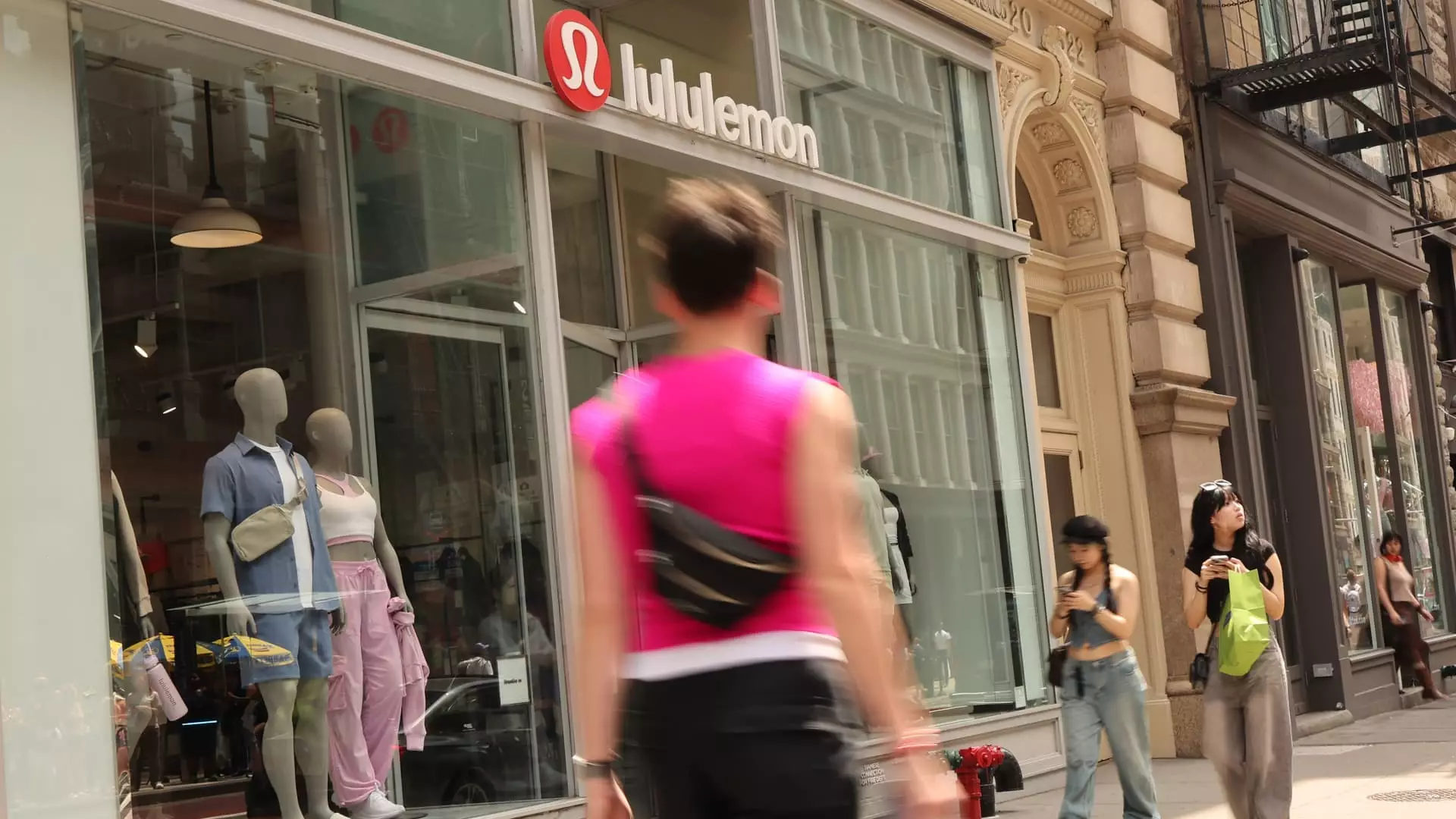Lululemon Athletica has recently reported its first-quarter earnings, which on the surface might seem like good news — beating Wall Street expectations for earnings per share (EPS) and revenue. However, diving deeper reveals a starkly different narrative, one where the company is forced to grapple with a significant decrease in its annual earnings guidance. This isn’t just a minor adjustment; it reflects a broader concern regarding the company’s health as it tries to navigate a tumultuous macroeconomic landscape. Surprisingly, even with a slight earnings beat at $2.60 compared to the expected $2.58, shares tumbled nearly 20% in after-hours trading, signalling that the market is reacting to the real story beneath these figures.
Guidance that Raises Eyebrows
CEO Calvin McDonald attempted to project optimism in light of this turbulence, claiming that they will “leverage our strong financial position and competitive advantages.” Yet, one must wonder how genuine this optimism is when the company downgraded its full-year earnings guidance to $14.58 to $14.78 per share, down from the previously forecasted $14.95 to $15.15. It’s not just an oversight; this reduction implies that Lululemon expects its momentum to stall while the competitive clothing sector continues to wrestle with inflationary pressures and unstable consumer spending patterns. Analysts had anticipated earnings per share of $14.89, and this dissonance between expectation and reality paints a concerning picture for investors.
The Weight of Tariffs
Lululemon’s challenges are compounded by external factors, most notably the tariffs that have become a primary concern for retailers across the board. Their earnings release comes amidst a wave of similar cuts from other retailers like Abercrombie & Fitch and Macy’s, directly attributing their lowered forecasts to uncertainties stemming from the current political climate. The company itself indicated that tariffs could significantly alter its cost structure, with other brands like Gap and Nike already signaling price increases to cope. Lululemon’s own assertion had been that tariffs would minimally impact profits, yet it is clear now that the reality is far different.
Global Supply Chain: A Fragile Framework
As Lululemon relies heavily on foreign manufacturing—predominantly in Vietnam and several other Asian countries—the vulnerabilities of its supply chain are unmistakable. The company doesn’t own any manufacturing facilities, which leaves it exposed to the whims of its suppliers. With 40% of products coming from Vietnam, the ongoing geopolitical issues could have profound impacts on both availability and pricing. This dependency should raise red flags not just for investors but also for consumers who are increasingly concerned about sourcing and ethical production practices.
Consumer Sentiment: A Deteriorating Landscape
Interestingly, when we look at comparable sales, the numbers tell a different story. A mere 1% growth in comparable sales year-over-year starkly contrasts with the optimistic forecasted 3%. Surprisingly, this stagnation includes a 2% decrease in sales within the Americas, reflecting a worrying trend. While there were gains in international sales, they were insufficient to offset the decline at home, suggesting that even the most devoted demographic is beginning to buckle under increasing prices and economic uncertainties.
The Implications for Future Growth
Looking ahead, while Lululemon anticipates revenue in the second quarter between $2.54 billion and $2.56 billion, the company is still lingering below Wall Street’s expectations of $2.56 billion. A projected earnings per share for the coming quarter also trails expectations, anticipating just $2.85 to $2.90 against the analyst forecast of $3.29. These discrepancies indicate a shrinking margin for error as the company heads into the competitive retail season.
This precarious balancing act now lies in Lululemon’s hands. The brand has built a loyal following, synonymous with high-quality athleisure wear; however, navigating these unpredictable tides will require more than just strong financial positioning. As both a consumer and an observer of market dynamics, one must ponder if this beloved brand can truly weather the coming storms or if it will become yet another cautionary tale in retail history.

